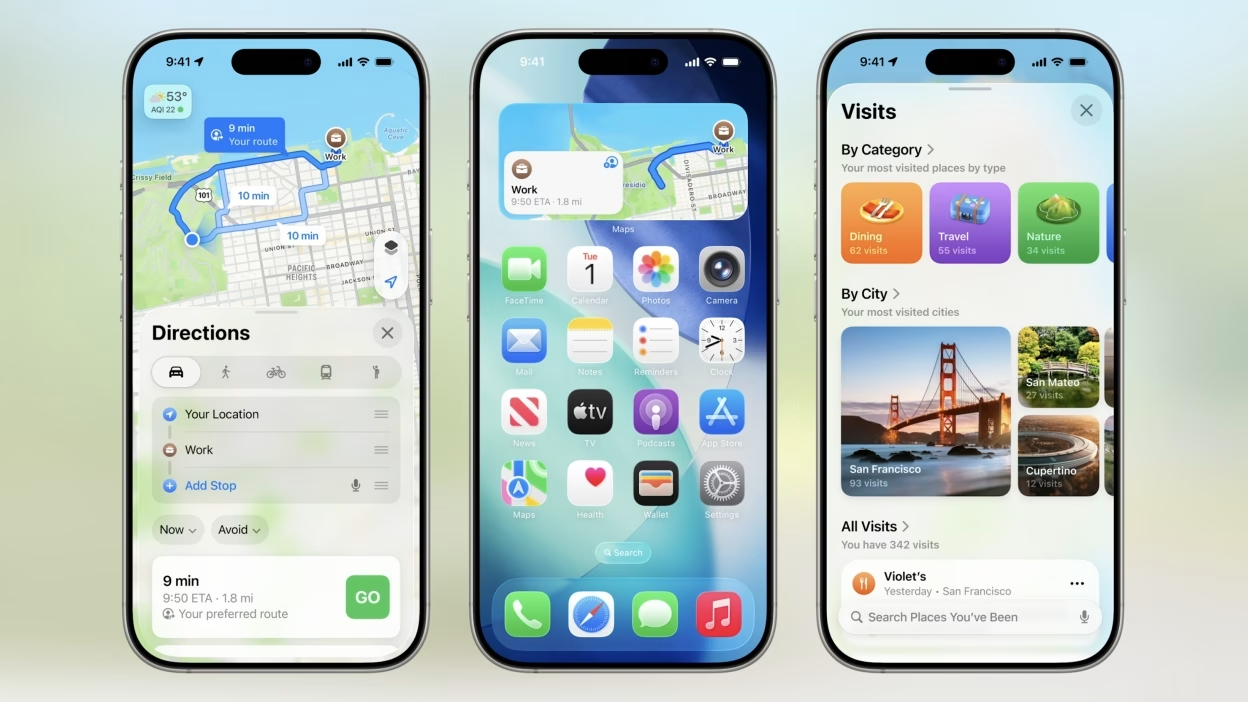The Evolving Landscape of Navigation: Apple Maps in iOS 26
It wasn't that long ago that Apple Maps, well, let's just say it had a bit of a rocky start. Remember those early days? We all do. But credit where credit's due: Apple has been relentlessly chipping away at it, steadily improving the service with each iOS iteration. And with iOS 26, it feels like they've really hit their stride, introducing some genuinely useful, user-centric features that aim to make our daily lives just a little bit smoother. We're talking about more than just getting from point A to point B now; it's about understanding our habits and proactively helping us navigate the world.
A New Era for Apple Maps
This isn't just a minor update; it's a significant leap forward, particularly in how the app interacts with our personal travel patterns and anticipates potential disruptions. For anyone who spends a good chunk of their day commuting or simply moving around, these additions are poised to be real game-changers. And honestly, it's about time Maps started feeling this smart.
Unpacking "Visited Places": A Personal History, Redefined
One of the standout new features in iOS 26's Maps app is "Visited Places." Now, if you're like me, your first thought might be, "Isn't that just Google's Location History?" And yes, it bears a resemblance, but Apple's approach, as always, puts a heavy emphasis on user privacy and explicit control. You're not just opted in by default; the app requires your clear permission to track these locations. This distinction is crucial, especially in an age where data privacy is (rightfully) a major concern for many of us.
Privacy-First Location Tracking
This isn't about Apple knowing your every move without consent. It's designed to be a personal log, accessible only to you, to help you remember where you've been. Think of it as a digital travel journal, but one that you hold the key to. For instance, I often find myself trying to recall the name of that fantastic little coffee shop I stumbled upon last month, or the exact address of that obscure antique store I visited on a road trip. "Visited Places" could be a godsend for those moments, eliminating the need to frantically scroll through old photos or browser history. It's a subtle yet powerful tool for personal recall.
Practical Applications and User Benefits
Beyond just nostalgia, the practical applications are quite broad. For business travelers, it could be invaluable for expense reports or client visit logs. For adventurers, it's a neat way to visualize past journeys. And for the rest of us, it simply offers a convenient, organized record of our movements. It’s a feature that enhances convenience without compromising on the privacy principles Apple so often champions. And that's a balance I think most users can appreciate.
Smarter Commutes: Proactive Alerts and Preferred Routes
Perhaps the most immediately impactful features for daily users are the new proactive commute alerts and the ability to remember preferred routes. Let's be real, nobody enjoys being stuck in traffic or, worse, being late for an important meeting because of an unexpected delay. These new capabilities in Apple Maps are designed to mitigate exactly that kind of stress.
Anticipating Delays: The Power of Proactive Alerts
Streamlining Your Daily Drive: Preferred Routes
The Aesthetic and the Functional: Liquid Glass Design
While functionality often takes center stage, the visual experience matters too. iOS 26 brings a new "Liquid Glass" design to Apple Maps, and it's quite striking.
Beyond the Data: A Visual Refresh
The "Liquid Glass" design adds a layer of polish, with smoother animations, more refined iconography, and a general sense of depth that makes the maps feel more alive. It's a subtle enhancement, but one that contributes to a more pleasant interaction. When you're staring at a map for an extended period, especially during navigation, these visual cues can reduce cognitive load and make the information easier to digest. It shows Apple's continued commitment to design, even in an app that's primarily about utility.
Community Reception and Market Implications
The initial buzz around these new Maps features has been overwhelmingly positive. Social media platforms, particularly X (formerly Twitter), have seen a flurry of activity, with users expressing enthusiasm for the added utility and, importantly, the privacy considerations of "Visited Places." It seems Apple has really listened to user feedback here.
Initial Impressions: What Users Are Saying
From what I've seen, people are genuinely excited about the proactive alerts. It's a common pain point solved. The "Visited Places" feature, while perhaps not as universally impactful as commute alerts, is also getting good traction, especially among those who value personal data organization. It’s a testament to how even seemingly small features can significantly improve daily digital interactions.
Bolstering Apple's Position in Navigation
For years, Google Maps has been the undisputed king of navigation apps. Apple Maps has been playing catch-up, and honestly, it's been a long road. But with iOS 26, these enhancements are strategic moves that significantly strengthen Apple's competitive stance. By focusing on personalized experiences, proactive assistance, and robust privacy, Apple isn't just imitating; they're innovating in areas that matter deeply to users. It's not just about getting directions anymore; it's about intelligent, personalized travel assistance. This could very well sway more users to make Apple Maps their default, especially those deeply embedded in the Apple ecosystem.
Looking Ahead: The Future Trajectory of Apple Maps
These new features in iOS 26 are more than just additions; they signal a clear direction for Apple Maps. It's evident that Apple is committed to evolving the app from a mere navigation tool into a comprehensive, intelligent travel companion. The emphasis on learning user habits, providing proactive insights, and maintaining a strong privacy posture suggests a future where Maps is deeply integrated into our daily routines, anticipating our needs before we even articulate them. It’s an exciting prospect, and I, for one, am keen to see what else they've got up their sleeve.
